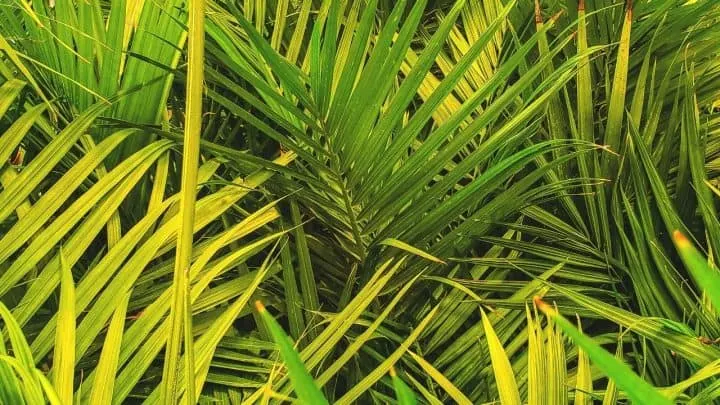Caring for a Majesty Palm indoors and outdoors in the garden. Here are my best expert tips.
Majesty Palm
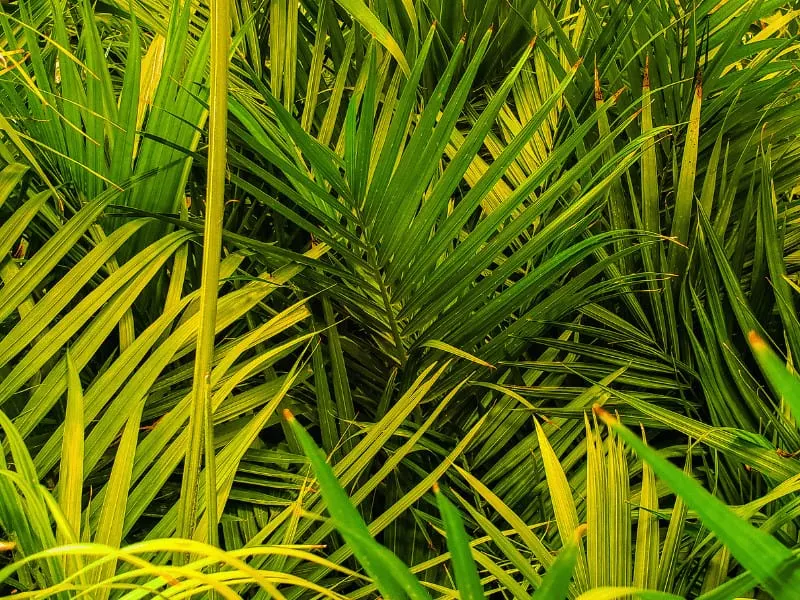
The Majesty Palm or Ravenea rivularis a member of the Arecaceae family. It is found in very limited areas on Madagascar Island, Indian Ocean.
The Ravanea genus has 20 species, each varying in size.
This is a Majestic variety of Palm tree with graceful green fronds with a feathery shape. It is a robust tropical plant that grows in the understory of jungles. It was first introduced as a houseplant in Florida in the year 1990.
This species is named Majesty to acknowledge the crown of fronds. These attractive fronds vary in shades of light and dark green.
This is a moody houseplant and demands extra care from its grower. For this reason, many growers classify this as a difficult plant.
This air purifying plant will add style and improve air quality. It can fit in any indoor setting, modern contemporary, or traditional.
Majesty Palm Takeaways
| Species | Ravenea rivularis |
| Synonyms | Majesty palm, Majestic palm |
| Family | Arecaceae |
| Genus | Ravenea |
| Propogation | Propagation through pup separation |
| Growth | Tree, shrub. Upright growth feet |
| Height | 98 feet |
| Soil | Use a well-draining potting mix using 2 parts peat moss, 2 parts sand, and 1 part loam |
| Watering | Water every 6 to 7 days |
| Light | Bright indirect |
| Temperature | 65 to 75°F |
| Humidity | 60-80% |
| Fertilizer | Fertilize monthly |
| Propagation | Propagation through pup separation |
| Toxicity | Non-toxic to animals such as cats and dogs as well as humans. |
Table of Contents
Majesty Palm Care Indoors & Outdoors
To care for a Majesty Palm, use peat moss, sand, and loam (2:2:1) as potting soil. Water every seven days to keep the soil moist but not soggy. The temperature should be around 65 to 75 degrees Fahrenheit (18 to 23.8 degrees Celsius). Provide bright indirect sunlight. Feed monthly in spring and summer using a balanced liquid fertilizer such as NPK 15-15-15.

Table of Contents
Majesty Palm Soil
The Majesty palm grows best in acidic soil using peat. It needs a fast-draining mixture to avoid soggy soil.
Holes for drainage are a must if you want to fight root rot and protect the roots from drowning.
I have potted my Majesty’s Palm in a regular potting mixture rich in nutrients and airy.
You can add a handful of peat to amend your mixture.
Another successful recipe is two parts peat moss, two parts sand, and 1 part loam. Ensure the soil remains acidic, with the pH falling from 5 to 6.
This Palm likes a humid environment. Therefore, you can grow it outdoors near your water garden or pond if you grow it outside.
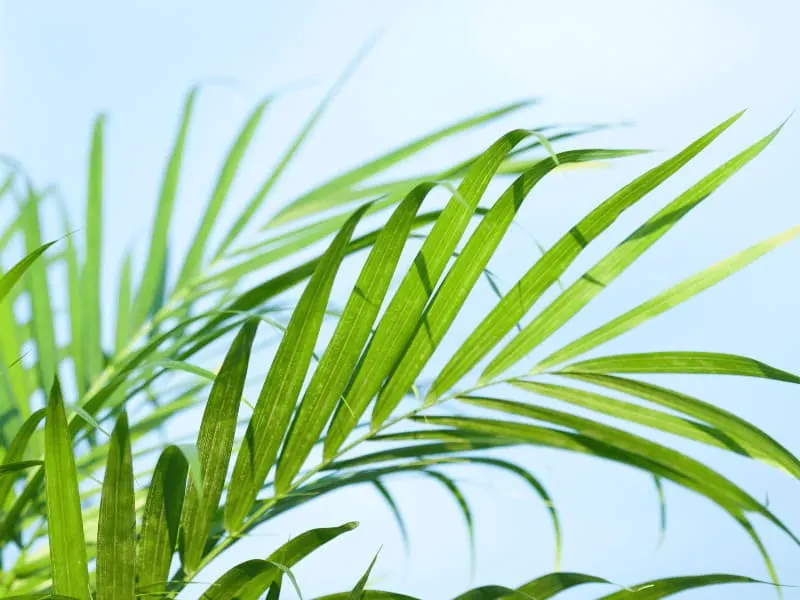
Watering
Ravenea rivularis found growing along the banks of rivers in its native region.
So it naturally admires plenty of water to keep the potting medium moist.
I always water this plant after a week or two in summer and spring. This plant requires very little water in winter or autumn.
If you are in an extremely warm area, keep a close eye on moisture levels.
In such a climate, water your plant every 2-3 days. The best time to add more water is when the top 1 inch or 2.5 cm is dry.
Your Majesty Palm will need more water in bright and medium sunlight.
You should increase the watering frequency if your plant starts shedding the lower leaves.
Maintain adequate moisture for this plant to thrive and remain green.
The key to good watering is to allow the potting soil to dry about halfway down.
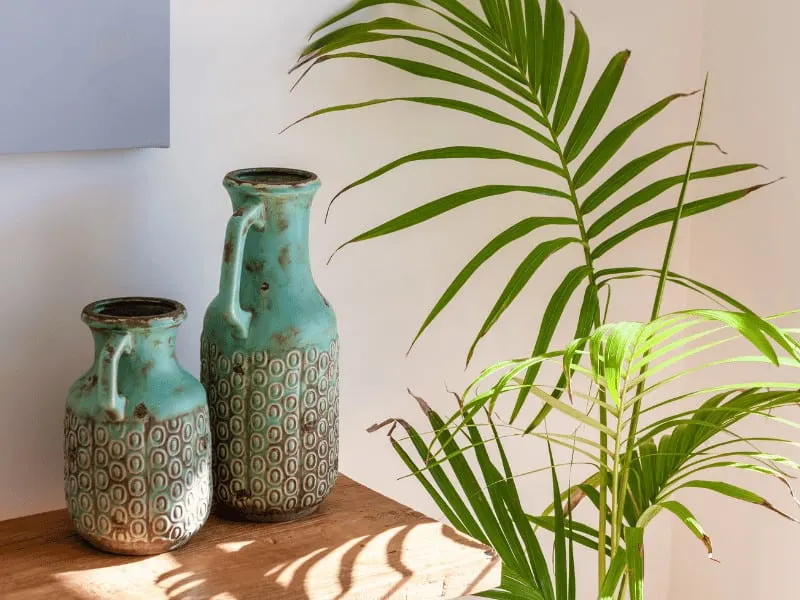
Majesty Palm Light Requirements
Majesty Palms grow best in bright indirect sunlight.
The Majesty Palm does not tolerate full sun outdoors. This variety can also grow well in medium, indirect sunlight.
You should never place it in the full sun, whether indoors or outdoors.
Place it next to the east, west, or south-facing window.
This plant is admired as a houseplant because it does not mind being in shaded areas.
But if the leaves of Your Majesty Palm appear bleached, you should immediately move them to a brighter location.
Majesty Palm Temperature
This Majesty palm needs an average temperature between 65 to 75 degrees Fahrenheit (18 to 23.8 degrees Celsius) throughout the year.
According to Toptorpicals, you can grow Ravenea rivularis outdoors in USDA hardiness zones 9b-11.
The Majesty palm is not cold hardy. The minimum temperature it can tolerate for a short time is 35 degrees Fahrenheit (1.6 degrees Celsius). The outdoor temperature tolerance is 40 degrees Fahrenheit (4 degrees Celsius). If temperatures get colder, move the plant inside.
The Majesty palm tolerates temperatures up to 85 degrees Fahrenheit (29.4 degrees Celsius).
Indoors, you should keep it away from heating vents or cold drafts. Outdoors also protect it from strong wind or frost damage.
In winter, it can withstand temperatures ranging from 55 to 60 degrees Fahrenheit (12.7 to 15.5 degrees Celsius).
It can adapt to cold temperatures but avoid leaving it outside during winter.
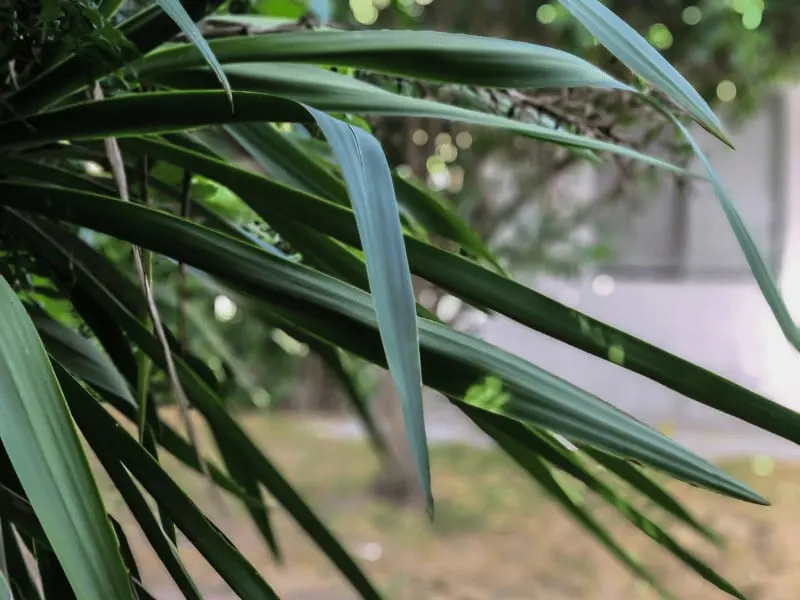
Humidity
The ideal humidity for a Majesty Palm is 60-80%.
To replicate the natural habitat where it thrives in moist, humid spots, I have placed mine in 80% humidity.
Use a humidifier or a pebble tray to increase indoor humidity.
To use a pebble tray, put a few gravels or stones in a tray filled with water. This water will humidify the environment around your plant. Refresh the water in the tray regularly.
A spray bottle and misting the leaves will not lead to increased humidity.
Fertilizer
Fertilize Ravenea rivularis monthly in spring and summer to avoid nutrient deficiency.
Fertilization is only necessary in the growing season in spring and summer.
You can also add a dash of Epsom salts to protect your plant from magnesium deficiency. The yellowing of leaves indicates this deficiency.
When your plant is young, you can add an NPK 3-1-3 fertilizer, but once mature, shift it to a balanced fertilizer like NPK 15-15-15.
Feed it only once or twice in the growing season with a liquid fertilizer.
You should avoid adding any fertilizer in winter and let your plant rest. If you like slow-release fertilizer, apply it once at the beginning of the growing season.
Applying it every month can cause fertilizer burns.
I prefer fertilizing this plant with a fertilizer designed for cactus plants.
You can choose any houseplant fertilizer, but always dilute it to half the recommended strength.
Flush the potting soil every season to reduce salt buildups that can burn the leaf tips.
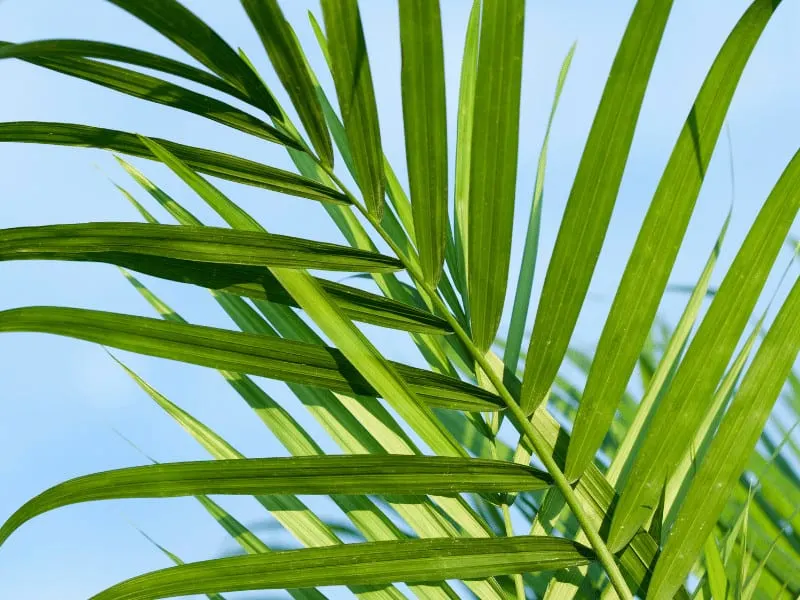
Repotting
This Palm Tree variety must be repotted annually or even more often depending on the soil condition.
You should also repot if you see any roots on the soil surface—transplant them to a large container to prevent the plant from tipping.
Ideally, repotting should be performed in late spring or early summer.
You should handle the plant very carefully while repotting because the root ball can be damaged easily.
Using sharp, sterilized tools to untangle or eliminate damaged roots is best.
Using a water hose, you should also remove all the soil around the root ball.
If your plant has become too root-bound, it needs a bigger pot. Choose a sturdy terracotta or ceramic pot one size larger than the previous pot.
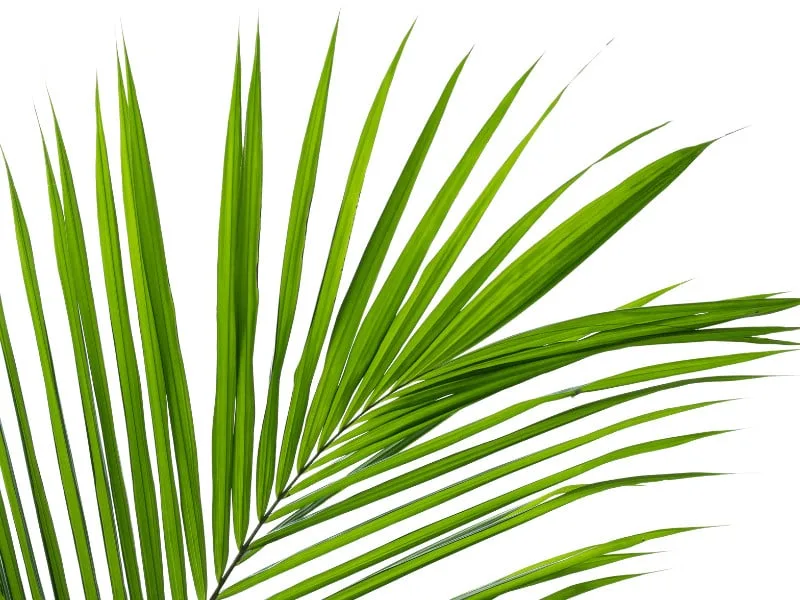
Pruning
This plant requires very little pruning. You will have to prune only to eliminate the yellow or brown fronds.
Trim all the leaves that look diseased. You can fertilize your plant one week before pruning; this will encourage new growth after pruning.
A fun trick is to prune the leaves at the bottom to encourage growth at the top. Maintain the original shape of the plant while pruning.
This plant sheds the old brown leaves when new leaves grow. Avoid removing these decaying leaves because your plant will automatically recycle the nutrients from these leaves. To prune your plant:
- Remove dead parts and trim about 3 inches from the trunk.
- Do not damage or remove the green, healthy leaves.
Always prune your plant using sharp and clean equipment.
Majesty Palm Propagation
Majesty Palms can be propagated from pups or by seeds. Stem cuttings are not a viable option to propagate this palm.
Pup Propagation
To propagate a Majesty palm from pups:
- Remove the mother plant from the pot
- Remove some of the potting soil and look for pups
- Cut off and separate the pups using a scissors or pruning shear
- Ensure the pups have some roots
- Put them into new potting soil into their new pot
- Alternatively remove the soil and propagate in water
Seed Propagation
The seeds for this variety are rarely available commercially, but if you get them by any chance, you can propagate them in a shallow container.
These seeds will germinate quickly under optimum conditions, so you must transfer your plant to a bigger container. Follow the steps below for seed propagation:
- Place the seeds under the moist layer of potting soil.
- Cover your pot or shallow tray with a plastic sheet to lock in the moisture.
- Place the tray/pot warmly at about 75-85 degrees Fahrenheit (23 to 26 degrees Celsius). The humidity level should be around 60%.
- You should also mist the soil regularly for faster germination.
The seeds for this Palm do not store well. Therefore you should sow them as soon as possible.
Majesty Palm Flower
This plant is a non-flowering variety when cultivated indoors. Most people grow it for its beautiful green leaves.
Outdoors it produces tiny, pale yellow flowers that are fragrant and a red fruit berry.
How tall is a Majesty Palm Full Grown?
In its native area, the Majesty palm can grow 15 to 20 feet tall (4.5 to 6m). The Majesty Palm growth rate is slow to moderate as it grows about 1 foot per year (30 cm).
The Majesty Palm got its name because of its majestic growth and appearance.
It adds texture to any dull corner in your home. The leaves grow in an arched pattern to form a majestic crown.
This plant can instantly give the tropical island touch with its bright green and symmetrical leaves.
The leaves grow straight from the trunk but curl towards the leaf tip. The trunk is grayish-brown.
Container gardening can limit the size of this plant; however, even as an indoor plant, it mostly grows 1 ft. per year and reaches a height of 5-10 ft. (1.5-3 m).
This is a slow-growing variety but develops several branches, each growing long arching leaves.
Many gardeners believe this plant resembles a Kentia Palm when young and looks like the Royal Palm once mature.
Pests
This plant is a hardy indoor variety but is often susceptible to several pests, including aphids, whiteflies, scales, and mealybugs. Low humidity is highly discouraged for this plant because it encourages mites and mealybugs infections.
Spider mites are the biggest threat to this Palm plant. The main symptoms are tiny white webs or speckles.
Treat the mites with a mixture of warm soapy water. You should repeat this treatment every few weeks.
For heavy infestations, I would recommend using insecticidal soap or neem oil.
You should also raise the humidity to prevent the mites from coming back.
To identify a mealybug infection, look for tiny cotton balls on the stems or under the fronds. Use an organic neem oil spray to remove them from your plant.
You can treat the above pests with a homemade garlic mixture. It is best to test a small area on the plant before using this mixture:
- Mash two cloves of garlic in 0.26 gallons of water (1 liter).
- Let this mixture sit for 24 hours.
- Strain the garlic pieces and spray your plant with this mixture.
Brown and Yellow Leaves on a Majesty Palm
Browning or yellowing leaves on Majesty Palms are mostly caused by water stress and overfertilization. Lack of sunlight can also trigger yellow leaves as well as pest infestations.
You should start by trimming the discolored leaves.
When leaves turn yellow or if any leaves turn brown, cut them off.
As most issues are caused by moisture stress, the next step is to change the watering schedule depending on the environment (light, temperature, and humidity).
I have prevented these by improving the growing conditions for my plant.
In my opinion, this plant is quite sensitive to the lack of humidity and water.
Majesty Palm Brown Tips
Brown tips on a Majesty palm indicate that the plant gets insufficient humidity. Try to water it more frequently and adjust the humidity level.
To increase the humidity level indoors, use a plant humidifier or a pebble tray underneath the pot with water. Outside you can put it closer to other plants to increase the humidity around the palm tree.
Majesty Palm Brown Spots
Brown spots on a Majesty palm can have multiple reasons. The most common reasons are water issues as well as pest infestations. Common pests are mealybugs and spider mites. Another reason can be a fungal infection.
Check your plant for pests, allow for sufficient air circulation, and let your water stand for at least 24 hours so harmful toxins dissolve.
How does an Underwatered Majesty Palm Look Like?
An underwatered Majesty palm has wilted drooping leaves. Apart from saggy leaves, the leaf tips and leaves turn brown.
To counter underwatering, increase the interval between waterings. Check the soil using your index finger and water the plant if the soil is dry. Keep the soil slightly humid but never wet and soggy.
How to Care for Majesty Palm
- Indoors, give this plant as much light as possible by keeping it under filtered, bright sunlight.
- You should never allow the soil of this plant to dry out entirely. At the same time, never let the plant sit in soggy soil. The best method is to check the soil by hand before watering.
- This plant can compromise on humidity but maintain at least average humidity of 40%.
- Provide good airflow around your plant to prevent pest growth.
- For better growth, try adding fertilizer with magnesium and calcium.
- Outside, it will thrive in bright sun with partial shade.
- This plant does not appreciate frequent movement; therefore, avoid moving it unnecessarily.
- While watering, add water until it drains from the drainage holes. For successful indoor gardening of this plant, never let the soil get completely dry.
- Regular pruning of this plant will keep the overall appearance tidy.
- Periodically wipe both sides of the leaves with a moist cloth.
Majesty Palm Air Purification
The Majesty palm is a great air purifier that removes benzene and formaldehyde. It also removes carbon monoxide and improves the air for breathing at home.
Majesty Palm Toxicity
The Majesty Palm is non-toxic to humans, cats, and dogs, says ASPCA.
Frequently Asked Questions
Why does My Majesty Palm have brown leaves with crispy leaf tips?
This is the most common issue with the indoor cultivation of this plant. Browning of leaves combined with crispy tips indicates dry potting soil. You are either under-watering your plant, or the soil is drying quickly. This problem can be easily fixed by refreshing the potting mixture or changing the watering schedule for this plant.
The fronds on My Majesty plant have suddenly turned yellow; what is wrong?
The fronds on my plant have suddenly turned yellow; what is wrong?
Yellow fronds are a sure sign of overwatering for this houseplant. Allow your potting mix to dry out between watering. Never let the excess water remain on the soil surface or the tray at the bottom. Another reason for this is inadequate sunlight.
How long can a Majesty palm survive?
If you maintain the correct indoor conditions, your Majesty Palm can easily live for about ten years.
How many hours of sunlight are best for a Majesty Palm?
This plant enjoys bathing in bright sunlight for 4-6 hours.
Is the Majesty Palm poisonous?
This is not a poisonous plant. But do not let the pets feed on this plant.
I hope you enjoyed the Majesty Palm indoors and outdoor care guide!

Daniel has been a plant enthusiast for over 20 years. He owns hundreds of houseplants and prepares for the chili growing seasons yearly with great anticipation. His favorite plants are plant species in the Araceae family, such as Monstera, Philodendron, and Anthurium. He also loves gardening and is growing hot peppers, tomatoes, and many more vegetables.

